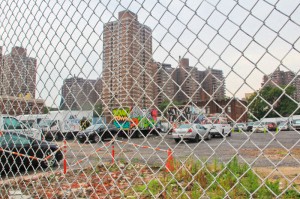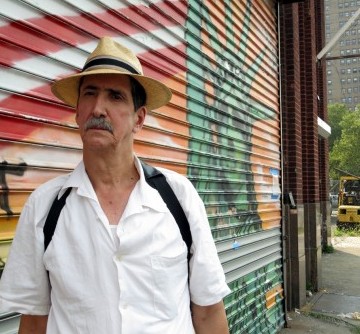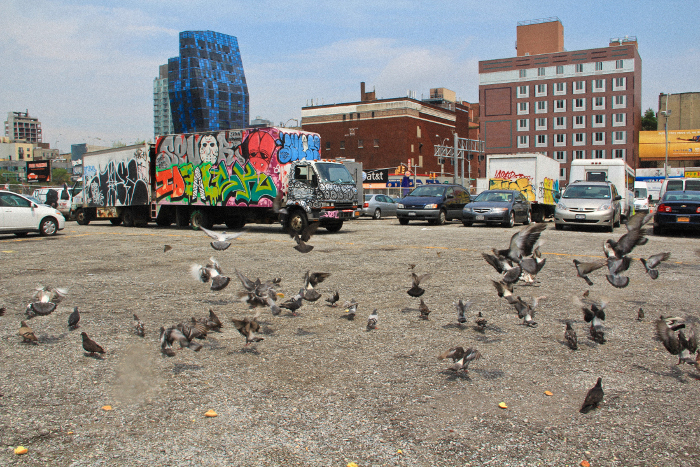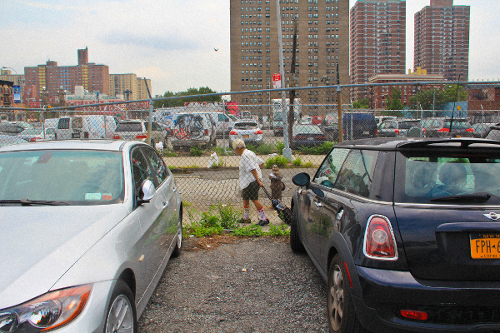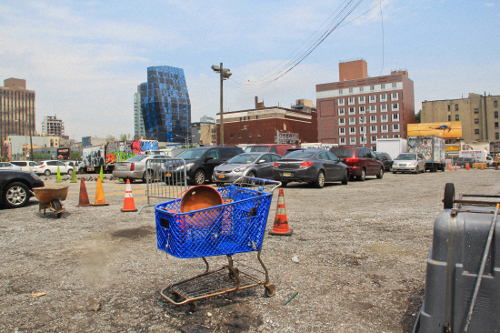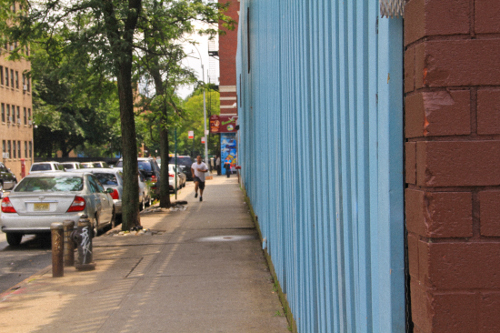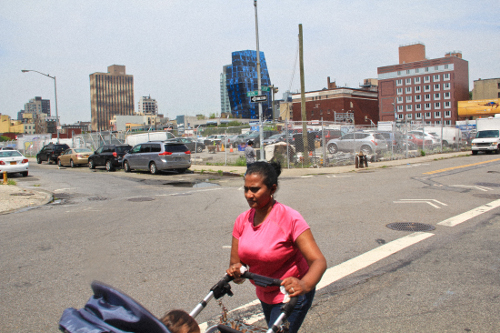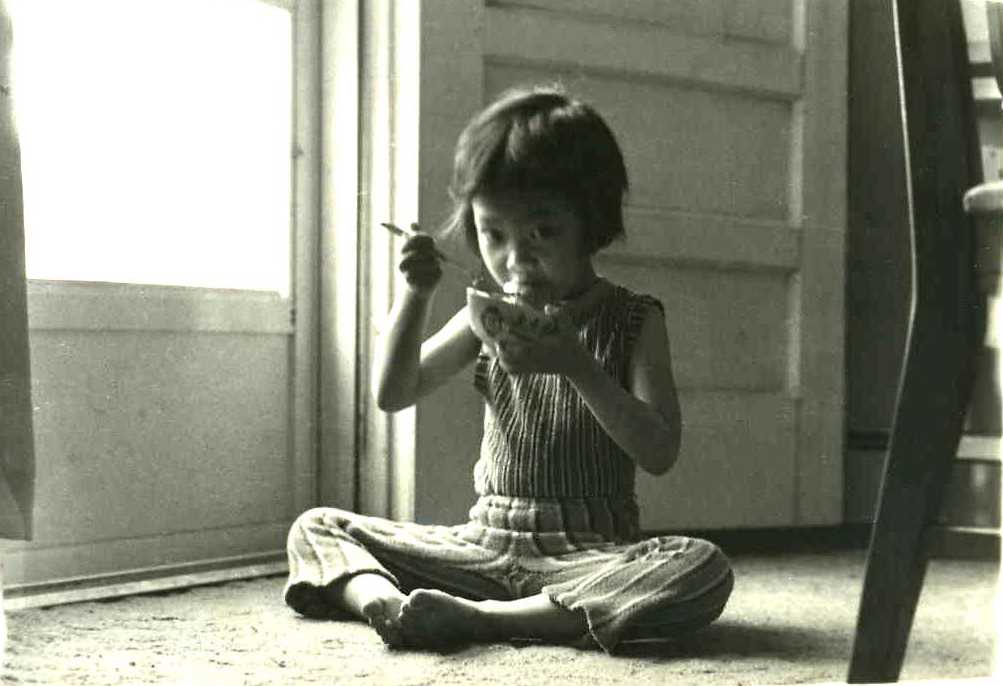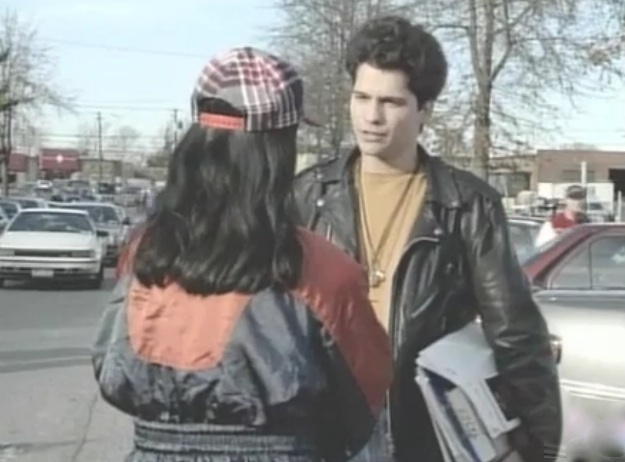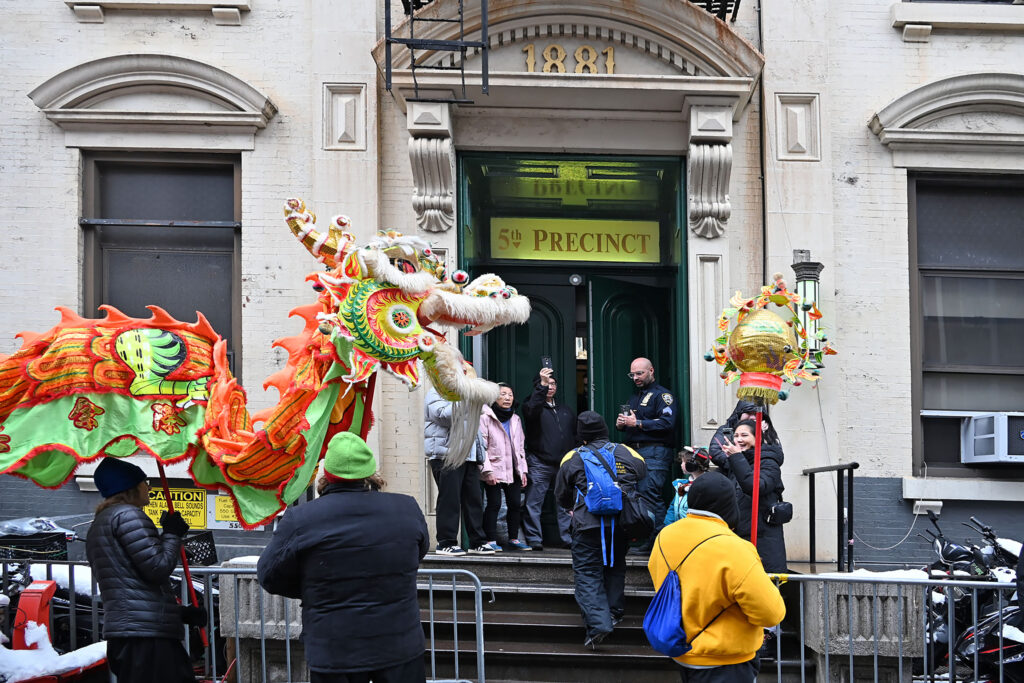After 45 years as a parking lot, the Seward Park Extension Urban Renewal Area will be developed to include mixed-income housing. So why are some advocates crying foul?
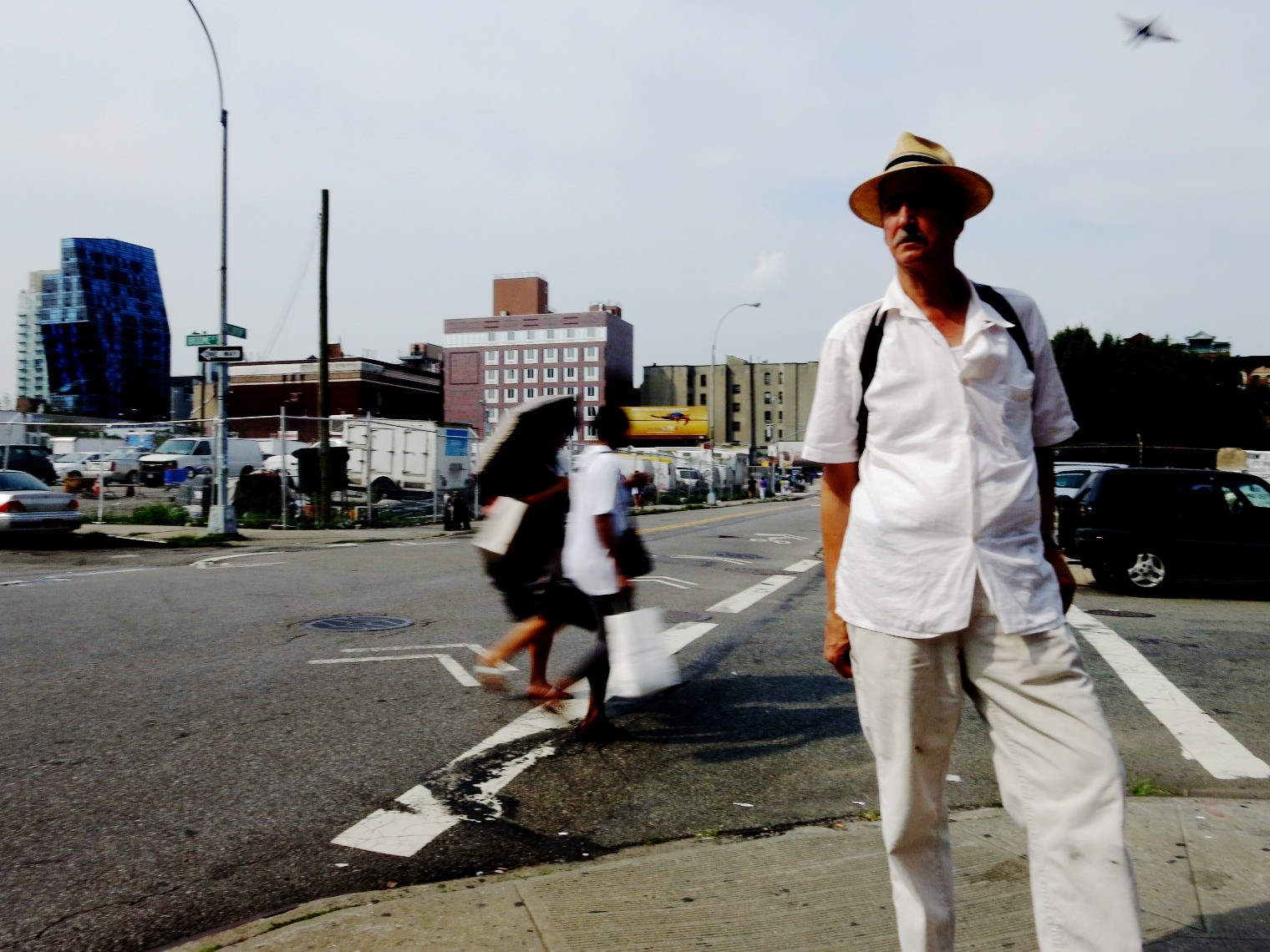
August 8, 2012
At 345 Grand Street on the Lower East Side, City Council Member Margaret Chin is a persona non grata. On the wall, pinned among protest flyers and intra-office reminders, hangs a black-and-white, crudely Photoshopped printout of Chin, bespectacled and smiling, in full royal regalia: crown, staff, fur-lined cape. “Her royal highness,” it reads.
This is the office of the National Mobilization Against Sweatshops (NMASS), a worker-oriented community group, and the headquarters of Chin’s vociferous foe, the Coalition to Protect Chinatown and the Lower East Side. The Coalition has accused Chin, a Democrat representing lower Manhattan, of selling out the neighborhood’s poor in the debate over the Seward Park Extension Urban Renewal Area (SPURA)—a constellation of vacant, publicly-owned lots on the cusp of development after 45 years of disuse.
The Coalition met with Chin on June 21 to discuss its no-compromise position on the residential aspect of the SPURA project. “We demanded low-income housing of 100 percent, but Margaret Chin said, ‘I can’t do that because they’re gonna call me crazy,’” said Yolanda Donato, a member of NMASS and 35-year public housing resident on the Lower East Side.
“What she’s doing is for the rich, not the poor,” said Amelia Avilas, who relies on a fixed income and has lived in the area since she emigrated from Puerto Rico 52 years ago. “[Chin] wants a division—the rich Chinese separated from Latinos and African Americans. She doesn’t want to unite the community.”
On June 27, outside Chin’s office at 250 Broadway, the Coalition held a protest against the councilwoman’s “pro-developer stance.” Chin responded in a press release: “The Coalition has grossly misrepresented my position on the issue of affordable housing on the SPURA site… My commitment is to building housing options that meet the needs of low and moderate income individuals, seniors, and working families in the Lower East Side neighborhood.”
As it turns out, the SPURA debate is more than a case of “she said, they said.” The fight between Chin and the Coalition hinges on the meaning of “affordable housing” and questions of compromise and entitlement to public land. At a deeper level, the dispute incites the acute politics of Chinatown and the Lower East Side, where community board and City Council members overlap with grassroots activists; and where rapid gentrification has heightened endemic tensions of race and class.
—
In the 1950s and 60s, New York City embarked on a statutory program of “urban renewal,” or eminent domain. Private property was seized and buildings demolished, all in the name of progress. On the east end of Delancey Street, the “Seward Park Slum Clearance Project” called for the displacement of nearly 2,000 low-income, immigrant families from brick tenements, with reassurances of a “right of return” to tidier, higher-quality housing.
Tito Delgado, a tall, mustachioed 61-year-old with a cane and straw hat, was just a kid when his family got word of the plan. They lived in an apartment at 145 Clinton Street, right next to a firehouse. “The first year in that apartment, we barely slept. The bell was always ringing,” he said. His parents were immigrants from Puerto Rico—his dad, a parking lot attendant, then bodega owner; his mom, a laborer in a garment shop. They raised him and his four siblings in an apartment building that housed “at least 14 or 15 ethnic groups that were really the composition of the Lower East Side: poor and working class.”
“What the city did was ‘conciliate’ buildings,” explained Delgado, a career civil servant and housing activist. “They would take one building, empty it out, and put it into another city-owned building, because the city had taken all that property under eminent domain.”
Just before their ouster from 145 Clinton, Delgado’s mother planted a sapling behind the building. “She said, ‘When we come back here, this tree will be taller than you,’” he recalled. But the city never built anything to return to.
Delgado and I walked along Delancey on a recent, sweltering afternoon. We visited the half-century-old footprint of his childhood home: a forlorn, fenced-off square of weeds, truck trailers, and large, potted plants. Like the other nine lots making up the SPURA site, the enclosure is an ostentatiously dismal use of super prime, gentrified Manhattan real estate—the largest stretch of unoccupied public land south of Harlem.
Why SPURA still looks this way has a lot to do with local politics. Different decades suffered different controversies; accusations of racism, fiscal crises, and withdrawals of federal funding among them. In the 1970s, several hundred public housing units were built, purportedly with former tenants in mind, but litigation ensued when white families from outside the area were permitted to move in. A 1980 proposal was partially blocked for having too many low-income and elderly slots, resulting in deadlock and more litigation; a 2003 proposal was blocked for having too few of the same. Meanwhile, original site tenants like Delgado went about their lives. “A lot of people went to Williamsburg. Back then, it was cheap rents. Some people went to public housing; some people went back to Puerto Rico or to Pennsylvania. There was a promise by the city: you’ll all be able to come back. That was a lie.”
Today, after 45 years, the city appears ready to approve a final plan for SPURA. The current proposal dates back to 2008, when Community Board 3 (CB3) launched a “consensus-building” alternative to top-down city planning. The idea was for the city and community stakeholders, like residents and business owners, to collaboratively set goals and establish a framework for the site. Meetings were held, hearings convened, community visioning conducted, artists deployed. (And some are still at it: in July, at Broome and Ludlow, Shakespeare in the Parking Lot put on a class-conscious, SPURA-themed production of The Merry Wives of Windsor Towers.) Everyone—rich, poor, black, yellow, brown—has wanted the SPURA lots to see some action. Most everyone wanted, or would accept, a mix of commercial and residential development.
Harriet Cohen, a longtime Lower East Side resident and chair of the volunteer group Seward Park Area Redevelopment Coalition (SPARC), was active in SPURA advocacy decades before the recent CB3 process. “We want justice for the former site tenants who were promised a right to return,” she said. “Since the 80s, there have been various plans coming and going. I didn’t get everything I wanted [in the current plan], but nonetheless, it was a process.”
On March 8, 2012, the city’s Economic Development Corporation and Housing Preservation and Development agencies announced a proposal. The SPURA lots would be developed to include both residential (60 percent) and commercial space (40 percent). The 900 housing units would be 50 percent market rate and 50 percent “affordable”—based on a lottery system and divided into middle-, moderate-, low-income, and senior housing—for a period of 60 years.
On April 18, 2012, CB3 held a public hearing at University Settlement, one of the area’s historic mutual-aid societies. Unable to find a seat or even a decent place to stand, I squeezed behind the metal bleachers, joining a beyond-capacity crowd of longtime activists, residents, organizers, small business owners, civically minded gentrifiers, and politicos. Comments boiled down to a reliable chorus: block Wal-Mart and other big box stores from the commercial spaces; make room for small businesses; ensure affordable housing in perpetuity (not just for six decades); don’t undermine the character of the neighborhood. No translation was provided, and Chinese and Spanish speakers relied on bilingual friends. “Please keep your comments to two minutes,” the moderator told them repeatedly.
The hearing started the clock for the city’s uniform land use review procedure (ULURP), by which zoning and other large-scale development projects wind their way through various city bodies, with the City Council having final say. In late May, CB3 unanimously (49 to 0) approved the SPURA plan proposed by the city in March, but with an important amendment negotiated by Council Member Chin: SPURA would have to maintain non-market, “affordable” units in perpetuity. The 50-50 allocation of market- and non-market-rate units was left undisturbed, and for the most part, business and community groups have made peace with the compromise. The city, too, according to Kyle Sklerov of the Economic Development Corporation, is satisfied with CB3’s version (he declined to comment further).
Only a few more steps in the procedure remain. The Planning Commission held a hearing on July 11 and will likely approve the plan this month; and Scott Stringer, the Manhattan borough president, has voiced support for the proposal. Soon, perhaps a few weeks from now, it will go before the City Council for a final vote.
—
In 2010, the area covered by Manhattan’s Community Board 3 had a population of about 159,000 people, 40 percent of them foreign-born and nearly 30 percent earning less than $19,000 per year. The median household income for the area was $43,518; the poverty rate was 28.4 percent.
Today, along the East River, brick towers house thousands of publicly-subsidized tenants, mostly Latino and African American. Near the East Broadway stop, migrant workers from China and Singapore cram into subdivided, low-rise tenements, just steps from a Café Grumpy outpost, where espresso drinks prepared by diffident hipsters fetch close to $5. Architect Bernard Tschumi’s BLUE Condominium, at Norfolk and Delancey, is less conspicuous today than when it was built in 2007, as more and more new construction appears on the Lower East Side.
Class divisions are sharp, and sharply perceived in this neighborhood. Hence the controversy surrounding the “affordable” housing units proposed for SPURA. The meaning of “middle,” “moderate,” and “low” income in this context is less than intuitive—indexed to city-wide, rather than neighborhood, data. These categories are pegged to the city’s household “area median income” of $76,800, meaning that, of the affordable, lottery-based units, middle income would be for households that earn $130,000 per year; moderate, $100,000; and low, $40,000. The senior citizen housing (10 percent of the total, or 90 units) would accommodate those on fixed incomes of $22,000.
Several years ago, Good Old Lower East Side (GOLES), a community organization heavily involved in the SPURA decision-making process, demanded 70 percent affordable (non-market-rate) housing on the site on behalf of mostly low-income residents and former site tenants. Earlier this year, before the full-CB3 vote, Damaris Reyes, the organization’s executive director and a CB3 public representative, was the only land use committee member to oppose the proposal, based on her dissatisfaction with the 50-50 split between market- and non-market-rate units.
It is this allocation, along with the area media income on which it’s based, that rankles the Coalition to Protect Chinatown and the Lower East Side. With only 30 percent of SPURA’s residential units reserved for the truly low-income, the Coalition believes the plan will accelerate the displacement of poor Latinos and African Americans in the area. They also foresee “luxury stores” taking over the working class clothing and sundry shops that once dominated Delancey Street.
“There’s such a need for low-income housing,” said JoAnn Lum, director of NMASS and a Coalition member. “Why not make that a priority on public land?”
Yan Su, 49, a former factory worker and childcare provider, lives with five family members in a one-bedroom apartment on East Broadway. Together, they pay $1,300 in rent. “The 50 percent ‘affordable’ income requirement is too high. A lot of people don’t make that much money,” Su said through an interpreter. “Rich people can go anywhere, but this is public land, so it should be 100 percent low-income.” Su has been organizing with the Coalition and with Chinese Staff and Workers’ Association (CSWA), a Chinatown group that, in the mid-1980s, litigated a precedential land-use case requiring New York City to consider the cumulative impacts of luxury development on surrounding neighborhoods.
“What [the Coalition is] saying is a real, genuine reflection of what people are feeling—[which is] the real pinch of gentrification,” said Emilie Rosenblatt, a GOLES organizer. Former site tenant Delgado agrees. “It was 100 percent of working poor folks that were pushed out, and the community was left devastated with a lack of affordable housing. I would never stand up at a meeting and tell those people who want 100 percent affordable housing that they’re wrong.”
As the City Council vote approaches, Chin, as councilwoman for District 1 and chair of the Committee on Lower Manhattan Redevelopment, is seen as very influential. “Because SPURA is in the district of Margaret Chin,” said NMASS’s Lum, “we are particularly counting on her to take a position.” According to Josephine Lee, CSWA organizer, “People are very disappointed in her, because they felt like when she was elected she should represent the Chinese community, which is predominantly low-income, but she’s failed to do that.” The Coalition views Chin’s advance negotiation of permanent affordability as necessary but insufficient. However, according to Chin’s communications director, Kelly Magee, “It was a major victory to get that commitment from City Hall… and the 50-50 split is more generous than in most projects in the city… Our stance on affordable housing is we will seek to maximize it as much as possible, and that’s what we’ve told the Coalition… We’ve said to them, ‘You have to consider the reality. You have to strategize. If you’re out there finding a developer who wants to [build 100% low-income, public housing], please let us know!’”
Before being elected to City Council in 2010, Chin led Asian Americans for Equality (AAFE), a Chinatown group that focuses on affordable housing development—but that’s seen by Coalition and NMASS member David Tieu as “the Donald Trump of Chinatown.” Thomas Yu, AAFE’s managing director of Real Estate Planning and Development and chair of CB3’s committee on parks and landmarks, describes the SPURA proposal “as a compromise that’s politically feasible…. You can’t build 100 percent affordable housing because of the cost of construction in NYC. People who don’t do development don’t know the cost of maintaining a building,” he said. I asked how he and AAFE define “affordability.” “SPURA’s affordability range has different gradients,” he said. “It doesn’t match with the affordability of the SPURA neighborhood, but that’s the economic reality.”
Tim Laughlin, of the Lower East Side Business Improvement District, affirms the use of a city-wide area median income. “The larger business community is extremely supportive of the project,” he said. “We agree with the compromises in the proposal. There’s a need in this community for affordable housing, … not only at the bottom tier but also the middle tier. There are many different income levels in this neighborhood that should be reflected.” CB3 Chair Gigi Li said similarly: “There’s a substantial middle-class income level. I think sometimes the struggling middle class gets lost in the conversation.”
Political pragmatists and those on the money side maintain that construction on public land like SPURA cannot be entirely public, especially in Bloomberg’s New York. But combining market-rate and “affordable” housing goes beyond monetary considerations. A little bit for everyone, the thinking goes; plus diversity and a cure to the cultural deficits of poverty.
The Coalition to Protect Chinatown and the Lower East Side rejects the mixed-income ideology, favoring equitable distribution and “public land for the public.” Under the current proposal, said Coalition member Avilas, “whites and rich Chinese, everybody who’s rich” will move in to the buildings, leaving behind the area’s Latinos and African Americans.
Race is a persistent factor in the neighborhood’s land-use battles. In 2008, NMASS and CSWA—the groups at the Coalition’s helm—fought the city’s preservationist East Village/Lower East Side Rezoning plan, which, they argued, failed to include the low-income, immigrant and African American areas of the Lower East Side and Chinatown. As that proposal coursed its way through city processes, Wing Lam, longtime director of CSWA, loudly and repeatedly accused the city of racial bias, and denounced local groups—like AAFE and GOLES—for going along with the plan. At an August 2008 hearing, according to The Villager, Lam derided these organizations as “poverty pimps.” (Disclaimer: I’ve worked closely with both CSWA and NMASS.) CSWA, NMASS, and individual residents, including Yolanda Donato, unsuccessfully sued Mayor Bloomberg over the plan’s “disproportionate impact.”
With the proposal moving quickly through ULURP, changes become more difficult—which is why NMASS, CSWA, and their partners are door-knocking, protesting, and collecting signatures on a daily basis. “A lot of people don’t really know. They’ve maybe heard a little here and there, but they don’t really know what the city’s proposal is. When they hear about it, they’re outraged,” said NMASS’s Lum.
“I’m not 100 percent behind [the proposal],” said Harvey Epstein, a legal services attorney who formerly chaired CB3 and now sits on the land use committee (full disclosure: he’s also my boss). “But people who were really involved [in the SPURA consensus-building process]—like organizers, affordable housing advocates—felt it was a reasonable decision.”
“[The Coalition] came late to the table,” said Cohen of SPARC. “They got involved at the tail end, and it’s just not tenable. As much as we’d like to see 100 percent affordable housing, it’s just not economically or politically feasible.”
“We’ve been doing this for years, and they’ve always been invited, and at the very beginning some people came from Chinatown, but then they stopped coming,” said former site tenant Delgado.
Coalition member CSWA disputes this characterization. “Between 2008 and 2011 we went to a lot of public meetings, and we would always call for 100 percent affordability,” said CSWA’s Lee. “But CB3 basically ignored what the community said and needs.”
Epstein supports NMASS and CSWA’s position “in the ideal” but feels the political will is lacking to fight for more low-income units. “I don’t think we’ll have as many allies in 10 or 15 years that we have right now. The city’s gentrifying; the LES is gentrifying. There will be fewer and fewer people who care about affordable housing in 10 or 15 years,” he said.
His point is well taken: that gentrification will change the political makeup, and perhaps the moral compass, of the neighborhood. What would consensus-building, a euphemism for “compromise,” look like then?
In the arts of politics and compromise, whether at neighborhood meetings or, imminently, before the City Council, the SPURA proposal is the Lower East Side’s pièce de résistance. But the primary question, the neighborhood’s ethical fault line, will continue to be affordable housing: what’s right or what’s practical, what’s doable now versus possible later, and how and when to expend that most precious resource—political capital.
“Whether they know it or not, [the Coalition] has been a great help to our fight for this plan,” said former site tenant Delgado, “because what they’re demanding, and rightfully so, is politically unrealistic. So we sound less radical and more acceptable!
“I would never tell those people to be quiet in this push for subsidies. I hope they make a ruckus. I hope they scream and yell and say, ‘You sellouts, you bastards, we want 100 percent!’ I just hope we get some housing before I leave this earth.”
Additional reporting by Josh Kandell.

